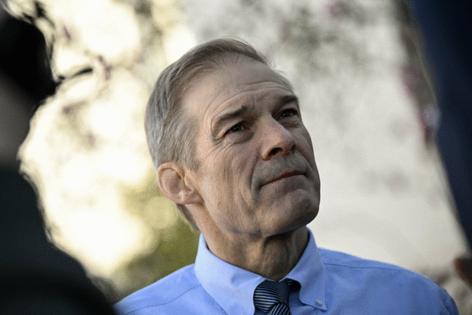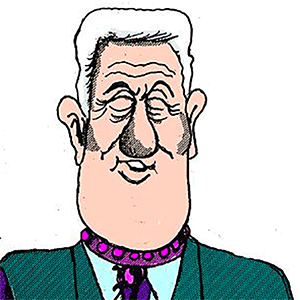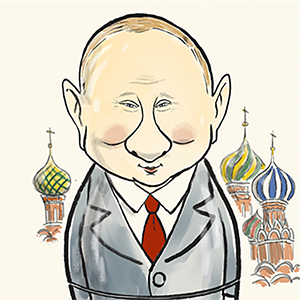Robin Abcarian: A new film about the Ohio State wrestling team sex abuse scandal indicts those who looked away
Published in Op Eds
For more than 30 years, Fred Feeney refereed matches for the Ohio State University's powerhouse wrestling team.
Unlike the dozens of young men whose athletic scholarships depended on staying in the good graces of the team doctor, Richard Strauss, who could withhold permission for them to compete, Feeney didn't have to persuade himself that what Strauss did was OK.
He didn't have to pretend it was OK that Strauss was constantly taking showers with athletes. Or that it was OK when, after a match, Strauss masturbated next to Feeney in the shower, then grabbed the ref's ass.
A visibly shaken Feeney recounts in the new documentary, "Surviving Ohio State," that he left the locker room that day in distress and immediately told wrestling coach Russ Hellickson and assistant wrestling coach Jim Jordan what had happened.
Both coaches shrugged, said Feeney, who added that Jordan told him, "It's Strauss. You know what he does."
Dan Ritchie, who quit the wrestling team in his third year because he could no longer tolerate Strauss' sexual abuse — which included forcing athletes to drop their pants and endure genital and rectal exams when they saw him, for even the most minor complaint — said that Jordan once told him, "If he ever did that to me, I'd snap his neck like a stick of dry balsa wood."
But Jordan, now the powerful chairman of the House Judiciary Committee and an unwavering ally of President Donald Trump, has assiduously denied ever seeing or knowing about assaults committed by Strauss during Jordan's eight years with the team.
He emerges as one of the bad guys in the new film, which is based on the Sports Illustrated 2020 investigation, "Why Aren't More People Talking About the Ohio State Sex Abuse Scandal?" Produced by the Oscar-winning documentarian Eva Orner and George Clooney's production company, it debuted on HBO Max in June.
"To say that (Jordan) knew nothing, that nothing ever happened, it's a flat out lie," Ritchie says in the documentary.
A callous response to reports of sexual assault was the norm at Ohio State. While administrators deflected reports about Strauss for years, claiming they were just rumors, the university's 2019 investigation, performed by an outside law firm, found that during his 1978-1996 tenure in the athletics department and at the student health center, Strauss assaulted at least 177 students thousands of times.
The school's fencing coach, Charlotte Remenyik, complained about Strauss for 10 years until he was finally removed as her teams' doctor. (In response to her efforts to protect her athletes, Strauss accused her of waging a vendetta against him.)
A complaint finally caused the university to remove him as a treating physician at OSU in 1996, but he was still a tenured faculty member when he retired, with "emeritus" status, in 1998. He died by suicide in 2005.
It was not until the Larry Nassar gymnastics abuse scandal exploded between 2016 and 2018 that the former Ohio State wrestlers understood that they, too, had been victimized by their team doctor, and that there were probably a lot more of them than anyone realized.
"I said, 'Wow, that's us,'" said former OSU wrestler Michael DiSabato, one of the first to go public. "It unlocked something in me."
A group of former teammates met in 2018, then later sat down with their old coach, Hellickson, in an emotional encounter. Hellickson promised to write letters supporting them, the wrestlers said, then ghosted them. He did not respond to filmmakers' requests to be interviewed.
Likewise, Jordan shunned requests for interviews, and he has appeared exasperated in news clips when questioned about what he knew. He's not a defendant in any of the abuse lawsuits filed against OSU.
In 2020, Michael DiSabato's brother, Adam, a former wrestler and team captain, testified under oath during a hearing on an Ohio bill that would have allowed Strauss' victims to sue OSU for damages, that Jordan called him "crying, groveling … begging me to go against my brother." Jordan has denied that conversation took place.
It seems to me that a normal human being, operating from a place of empathy, might express feelings of sorrow that the young male athletes in his charge were abused to the point that some considered suicide and others quit sports altogether, instead of accusing them of lying. Ritchie, for example, said his father was so disappointed about his decision to quit wrestling — he could not bring himself to tell his father why — that it permanently overshadowed their relationship.
I find no evidence that Jordan ever expressed feelings of regret for his wrestlers, though he did insist to Politico in 2018, "I never knew about any type of abuse. If I did, I would have done something about it. And look, if there are people who are abused, then that's terrible and we want justice to happen." If?
Although the explosive new documentary has been overshadowed by the implosion taking place in MAGA world over the "Jeffrey Epstein files" and questions about Trump's relationship with the serial sexual predator, the OSU scandal is far from being yesterday's news.
So far, OSU has settled with nearly 300 abuse survivors, each receiving an average of $252,000. But many are not willing to settle for what they consider peanuts and note that the average payout to Nassar's victims is more than $1 million.
On Friday, as part of a federal civil lawsuit filed by some of them, Jordan was reportedly due to be deposed under oath for the first time about the allegations that he knew about the abuse and failed to protect his wrestlers.
Steve Snyder-Hill, one of the first OSU non-athletes to report that he'd been assaulted by Strauss in 1995, told NBC that he planned to be present for Jordan's deposition.
"I expect him to lie under oath," said Snyder-Hill. "I don't know a nicer way to put it."
_____
©2025 Los Angeles Times. Visit latimes.com. Distributed by Tribune Content Agency, LLC.

























































Comments